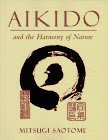 Last September when I first officially* trained in hakama I got a black eye. Not as black as Captain Jack Sparrow's but it could still be noticed.
Last September when I first officially* trained in hakama I got a black eye. Not as black as Captain Jack Sparrow's but it could still be noticed.
I didn't watch Little Britain at that time but I could have surely repeated stage hypnotist Kenny Craig's famous lines when I saw people staring at me in the street:
"Look into my eyes, look into my eyes, the eyes, the eyes, not around the eyes, don't look around my eyes, look into my eyes, you're under"
It was also funny when I went to watch the others play football the next Saturday wearing sunglasses on a particularly cloudy day. Some other players actually believed that I didn't play because I hadn't passed the ball enough times the previous Saturday and things had turned nasty when discussing the matter :) (I couldn't say that one of the aikido girls kicked me in the face, that would have been so unmanly! :)).
Truth 1. I didn't want to play because I still felt some fluidy material 'being shaken' below my left eye so it wouldn't have been wise to kick the ball and run around. I turned into manager instead and directed the team. Some players liked it, the others didn't want to say anything in case I started picking fights :).
Truth 2. the Saturday games are far more friendly than it seems from the above paragraph.
There's another joke I immediately remembered when I saw myself in the mirror (I knew this joke with another nationalities so no offence to anyone):
Three Scottish men were sitting together bragging about how they had given their new wives duties
Macbain had married a woman from America and bragged that he had told his wife she was going to do all the dishes and that needed done at their house. He said that it took a couple days but on the third day he came home to a clean house and the dishes were all washed and put away.
Macgregor had married a woman from Australia. He bragged that he had given his wife orders that she was to do all the cleaning, dishes and the cooking. He told them that the first day he didn't see any results but the next day it was better. By the third day, his house was clean, the dishes were done and he had a huge dinner on the table.
The third man Cameron had married a Scottish girl. He boasted that he told her that her duties were to keep the house cleaned, dishes washed, mowed, laundry washed and hot meals on the table for every meal. He said the first day he didn't see anything, the second day he didn't see anything, but by the third day most of the swelling had gone down and he could see a little out of his left eye. Enough to fix himself a bite to eat, load the dishwasher, fill the washing machine and call a landscaper.
God bless Scottish women!!!

Apart from laughing at it, I tried to do something 'scientific' about it and documented my black eye's gradual disappearance. In case you want to fake a black eye for whatever reason, have a look at the pictures and apply the make up with respect to which day you are faking from the supposed injury (the idea comes from a
CSI episode when the sharp-eyed CSIs noticed that a women applied the same black eye make up for several consecutive days).
The other reason for taking photos every day was that the person who accidentally kneed me in the face felt guilty about it although we immediately agreed after the incident that 'accidents happen, next time both of us will be more careful'. It would have been silly to make a scene or point to someone else even if I felt like that anyway. But I didn't.
I'm putting the photos of my mornings-after-project here on the right. Note that I didn't take pictures every day when the bruises became hardly visible (click on it to enlarge).
Now, how the eye got its nice, dark colour: it had all happened before the training even started. I put my hakama on properly for the first time so it had to be tested. Simple tachi waza was ok, I felt comfortable.
Mae ukemi, ushiro ukemi were fine, I rolled exactly like before. I knew suwari waza would be more complicated. I expected that when I move in suwari waza I would step on my hakama and possibly fall over (I had heard similar stories before). Simple suwari movements were not so easy but at least I didn't hurt myself. So we tried some techniques where I'd be thrown in suwari waza: I think kotegaeshi was the first (and last) technique to try. I'm not sure whether it was the first kotegaeshi immediately or the second, but when going down to roll I felt a sudden
blunt force trauma (too much CSI at that that time) below my left eye. My first thought was that I'd be fine because I hadn't felt any cracking noise which would have meant that something had been broken. The left part of my face was a bit numb so I laid down on the mat to get over it but I wasn't in shock or anything similar. I got a cold, wet towel to put on the 'wound' as we didn't have ice in the dojo. Then I trained like before, the only difference was that thing at my left eye which made me colour some tissues red from time to time during the training.
That was the only injury I have had in a training visible for more than a week in my 7 effective years of doing aikido. I think it's much better injury rate than for any other martial arts where you can easily get a broken rib in a competition.
*I count the Sunday training as official because there are kickboxing trainings before and after the training on Wednesdays and, although I had practiced tying and folding my hakama at home before the first Wednesday training, the pressure of having to change to gi and hakama quickly before training and changing back to normal clothes even quicklire after training was high and I couldn't tie and fold my hakama as nicely as I wanted to.

























































